[Techie Tuesdays] Meet Krishnan Narayanan, the techie who moved to mountains to code
In this week’s Techie Tuesdays, we explore the story of Krishnan Narayanan, the Tambrahm from Bengaluru who has made Dharamsala the base for his two passions: climbing and coding.
Year: 1988. Location: Sagar Theatre, Bangalore
The next show of Rajkumar-starrer Kannada spy thriller Operation Diamond Rocket has just started, and you can see Rajkumar lying on a sofa. In the audience there is a confused engineering graduate who has come to the city to appear for an interview.
Krishnan Narayanan, an electronics and communication engineer from NIE, Mysuru, was given this as the address for Tara Computers, an IT company that could potentially offer him his first job.
Twentynine years later and 2,600 km away, he runs an IT setup of his own in Dharamsala. Over the last three decades, Krishnan has split most of his time between climbing (rocks and mountains) and coding. When he’s doing neither, he’s definitely talking about one or the other.
In a conversation that ran on for almost five hours, our Techie Tuesdays for the week, Krishnan, shared his exciting journey, which started in Bengaluru (then Bangalore) in the late 1960s. He’s not just a techie and an entrepreneur, but an excellent storyteller and an entertainer extraordinaire as well. You’ll get a glimpse of his philosophies of life and sense of humour (in his own words) in this story.
You may also like: Amit Ranjan—the entrepreneur who crossed the startup-government chasm
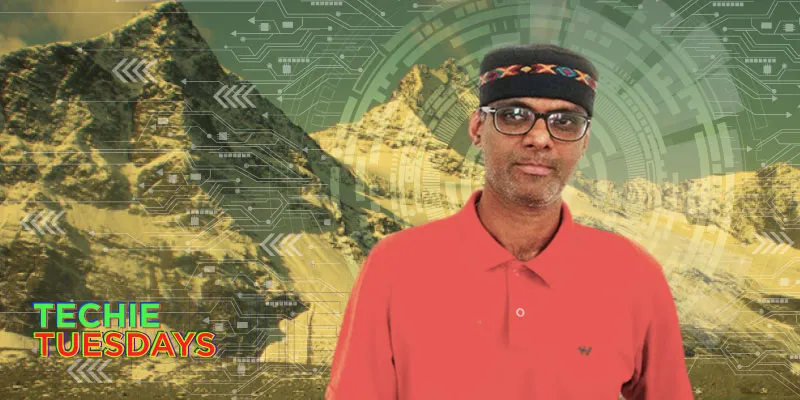
Bangalore of 60s and 70s
Krishnan hails from a Tambrahm family from Srivilliputhur, Tamil Nadu. His father moved to Bangalore in 1948 to join HAL as one of its first employees. Born in the HAL Hospital in the city, Krishnan remembers spending much of his early days playing in the empty streets of Indiranagar (now a crowded residential locality in Bengaluru). According to him, he had a typical Tambrahm childhood. He had to learn music when he was four years old; it wasn’t even a choice. Sports came naturally to him. He was good at cricket. He recalls being called (Syed) Kirmani by his friends because he used to open (the innings) and keep wickets. He went for the cricket selections when he was 12 (and continued doing so for two years), but couldn’t even get noticed. He recalls,
When I went for the final time, I knew I had to do something remarkable to catch the attention of selectors in that 10- or 15-second window. So, I played a sweep shot when the ball pitched slightly on the off-side, to demonstrate my control and good footwork (and play the ball to its merit). I did that and looked at the selectors, only to realise that they didn't even see it (again).
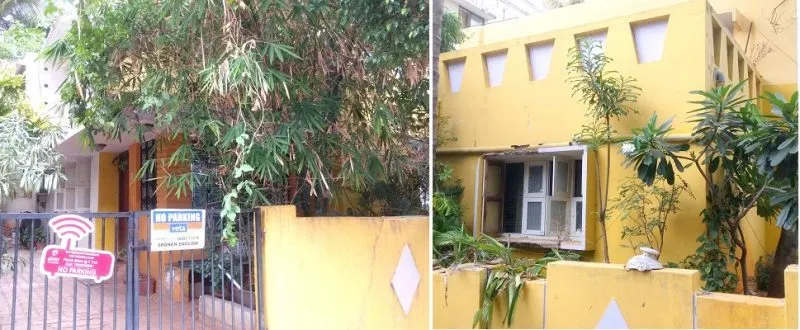
He left cricket for good and started playing basketball. Interestingly, he started thinking that being ambidextrous would enable him to have better control in the game. He says, “I used to chop vegetables with my left hand to practice it. My mother didn’t have any clue why I was doing it.”
Related read - Meet Arun Ganesh, the 29-year-old map man of India
The ‘spark’ of rock climbing!
Shyam got into rock climbing by accident. He narrates the story behind it:
There was a bike called Spark getting launched then, and we noticed a poster mentioning it. We got excited and went to Jayanagar (the launch address). It was only later that we realised that SPARK stood for the Society for Propagation & Activation of Rock Climbing. But I was happy to discover that there was a concept called rock climbing, because I was doing that throughout my life.
Krishnan went for the rock climbing session, and was hooked for life. He thinks that the best thing about rock climbing is that everybody is a child, because you realise very soon that there's no point in competing.
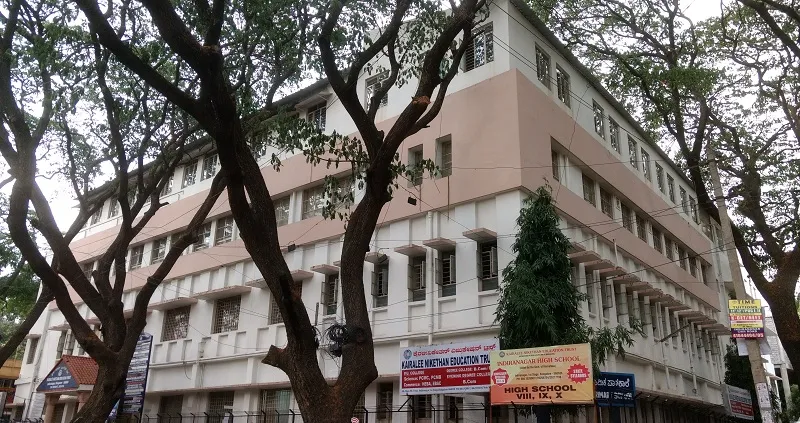
Science – an obvious choice
In high school, Krishnan opted for science, in line with his attitude of always asking ‘why’. Soon after that, his cousin, who was in IIT, gave him a book to study to crack the IIT entrance examination. Krishnan found the book very hard, and wasn't convinced about sacrificing two years for the preparation. He puts his philosophy across like this:
Imagine spending two years saying, ‘A train with mass m1 and velocity v1 collides with a train with mass m2 and velocity v2. Assume that the track is straight and they collide head on; how will they deflect?’ I said, ‘People freaking die, man! I'm not dealing with this.'
Krishnan wanted to do engineering, but was at the same time not keen on preparing for IIT, to put it mildly. So, he figured out a way–the NCC (National Cadet Corps). He claims to have only two and a half friends, and Senthil, whom he has known since his school days, is one of them. Senthil wanted to join NCC because he wanted to fly, but since he had a hole in his heart, this was his only hope. Meanwhile, Krishnan loved water, and didn't want to fly. They got lucky and got into NCC Navy. At NCC, Krishnan and Senthil were told that if they did really well, they could get into engineering. Krishnan says, “It was all about running six km very well. In short, I ran and got the engineering seat. But after that, it was just climbing and running. Engineering was horrible.”
Related read - How this couple uses tech to help tribals claim ownership of their land in rural Gujarat
Either party or go home – How about both?
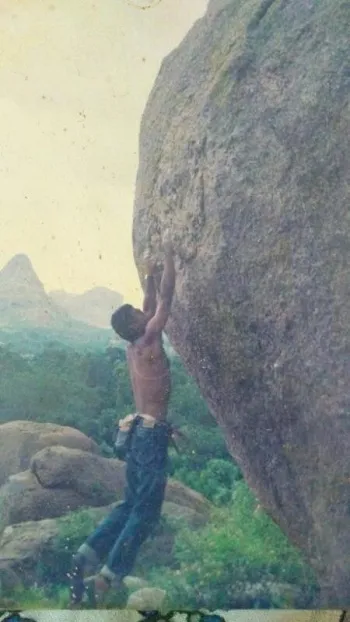
Krishnan studied Electronics and Communication at NIE, Mysore. Till date, he thinks it was a horrible decision to choose NIE because of the thought that rigidity would be good for him. He got through the engineering somehow. He paused his climbing for four years, but picked up cycling by accident. He tells the story behind it,
“At the end of the semester, with Rs 15 in hand, you can either party or go home. The night train from Mysore to Bangalore would cost Rs 11.50, and you could have ragi mudde for the rest of the way.”
Krishnan got greedy and wanted to party (and have a good meal as well). He found the solution to his problem–cycle his way through the night and reach Bangalore by morning.
According to Krishnan, his biggest learning in programming at college was that data structure is the most important part of a program. He started programming in assembly language in his seventh semester on machines that then had 8085 microprocessors.
Operation Diamond Racket
After graduation, Krishnan was referred by a friend to join Tara Computers in Bangalore. The company was founded by the owner of Sagar Theatre, and the office was located there. Krishnan recalls,
“When I went for the interview, the theatre was playing Operation Diamond Racket. Rajkumar was lying down on the sofa.”
Krishnan’s first ever interview lasted 10 minutes, where he wrote the program to calculate the number of adjacent squares (taking two at a time, then three at a time, and so on) on a chessboard. He wrote a recursive program in assembly language to solve it.
Krishnan worked on building a printer sharer at Tara Computers. Through this hardware device, one could connect a printer to up to four computers (with printer cables), and then fire printouts from any computer. According to Krishnan, in today's world, it could be called version 0.3 of a product. It worked, but with great difficulty. Krishnan wrote the program in assembly language for the printer sharer.
He was there for two years and eight months, and he didn’t get paid for the last eight months as the business was not doing well. His father assumed that he was making money, and so the situation became pretty bad at Krishnan’s end. He would cycle to work with only Rs 10 in pocket. He had idlis and tried to last as long as he could so that he could directly eat dinner at home. At times, his work used to extend beyond 10 pm, and so he started smoking. It helped him kill the hunger and keep long hours. Unfortunately, he got duodenal ulcers because of this. Finally, Krishnan decided to leave Tara Computers.
He says, “One thing I carry from Tara Computers is that your office need not look like a normal office and people shouldn't come to you for more money, they should come out of passion or to learn.”
Also read - Sandipan Chattopadhyay — the statistician behind the 160x growth of Justdial
Problem solver at Intel Data Systems
After Tara Computers, Krishnan joined another small company–Intel Data Systems. It was a COBOL (Common Business Oriented Language) company that was looking for somebody with assembly language programming skills. The company had a hotel management systems software in 1991. They found Krishnan because they needed printer sharers.
By this time, Krishnan knew that he wanted to work on UNIX for the rest of his life. At Intel Data Systems, he learnt a bit of COBOL and realised that it solves one problem unbelievably well. He says, “If you have a huge application to write on which you want to put 500 people, COBOL can do it. It is designed for it. COBOL is a truly portable language, meaning that you can take a program and port it and the data can be ported as well.”
Krishnan worked on two main projects at Intel Data Systems:
- He wrote a program to do data entry into the mainframe at Kolar Gold Fields. It could also port data from people’s desktops to the mainframe. The desktops used Intel 80186 microprocessors then, with Microsoft 3.3.
- He also worked on a weighing machine software using SQL. In the sugar industry, when sugarcane comes in trucks, the trucks are weighed once with sugarcane, and then again after the unloading of the sugarcane. The difference is taken as the weight of the sugarcane. People however realised that a massive amount of pilferage was taking place as the trucks often had hidden stones and rocks (thus increasing the weight). Using SQL, Krishnan found a smart way to figure out if there were major cheaters. If you have five trucks, you see how much a truck has delivered over one month and average it out. Then, take another truck and average it out. This will give you an idea of the median, and if someone is cheating on a large scale, the data will suggest so.
After some time, Krishnan realised that he was never going to be an application programmer at Intel Data Systems, and that the company was keeping him because they were scared of what would happen if there was a massive problem that they couldn't solve. He had heard about Heuristix Systems by then, and wanted to join them.
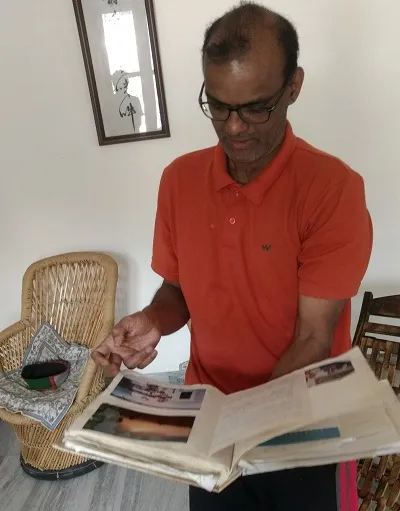
Brilliant product, no hope
The Heuristix Systems team was very well qualified, and Krishnan went through six interviews before he could get in. He recalls,
“It took them four months to take me in. But the moment I went in, the company went south, and it was very obvious that there was no way that the product was going to get through, because we needed a lot of money.”
Heuristix Systems had a product that they claimed was better than Rational Rose software at that time. The company was the first in the world to implement a setup called portable common tool environment. Krishnan thinks that all the team members were socially misfit programmers, and it was a case of a brilliant product with no hope.
Networking the HP way
After Heuristix Systems, Krishnan moved to HP to take care of network (routing) protocols. He explains,
“If you want to send an email from here to the US, the routing protocol will decide how you find the shortest, most efficient, or cheapest path, and which one makes the most sense. For example, streaming has to be send-on-priority, whereas email to email communication can be delayed (relatively).”
He worked on TCP and KAME stack. Soon, Krishnan came across an offer to work for a Japanese company that wanted to build a whole routing switch using BSD (version of UNIX) stack. When he shared his interest on pursuing this opportunity, his boss agreed to it, and told him to come back after the project was done.
You may also like the story of Baishampayan Ghose — the Agartala boy who is all set to become a farmer after co-founding 3 startups
Japanese culture
Krishnan worked with the Japanese company for 11 months. This experience truly redefined professionalism for him. He describes a case: “If you have a problem with someone in the office there, you ask him/her to go out for a drink in the night and party. You party and party and party, and towards the end of the party, you politely tell them what’s wrong. You'll close it there itself.”
Krishnan also learnt that the Japanese don't throw stuff. Since the stack built by his team couldn’t go public because the final product wasn't good enough to be commercially launched, they called him over once more, and spent two months just to see what good could come out of it. They spent 25 percent more money just to figure it out.
The life of a consultant
After his 11-month stint in Japan, when Krishnan went back to HP, they asked him to focus 30 percent on his work (networking protocols) and become a consultant (for Heuristix) for the remaining 70 percent of the time, inside HP. He says,
HP followed the philosophy of management by walking. You just walk around and find some place where you're useful and sit down, work on it and walk away. In HP, the manager would move, and the engineers would stay in a project. Managers are facilitators.
This was also the time when Krishnan created Gai Technologies to make his (and others’) consultancy job easy, as companies are often petrified of individual consultants and find it more trustworthy to hire a company for a job rather than an individual.
One day, during one of his climbing session, Krishnan met Praveen, a fellow climber and an entrepreneur. He wanted to hire Krishnan for his company, C2Silicon, to work on a hardware switch idea. Krishnan joined the company, but had to quit after a brief stint because the company scrapped the product later and top management didn't have a vision for the company.
During all these years, Krishnan’s rock climbing never stopped, and he would go to Hampi and the mountains in northern India for a month or two every year.
Also read: How Chetan Ahuja is rewriting the 40-yr-old IP protocol to speed up your mobile apps
Mountains – part I
In the meanwhile, Krishnan got married to Archana Shyam, and the couple was about to have their first baby. Seeing his nieces and nephews, Krishnan loved the way a child grows from birth to one year, and wanted to spend 24 hours watching his child grow. He didn't want it to be in Bangalore, because of the pollution. So, he and Archana left for the mountains in 2003, when Archana was about six months pregnant. It was a recce trip to Ranikhet (Uttarakhand), where they stayed for some time. Because of issues with health facilities, Krishnan and Archana came back to Bangalore for delivery, and then went back to Ranikhet when their son Sarang was one month old. They ran out of money after a few months, and again returned to Bengaluru.
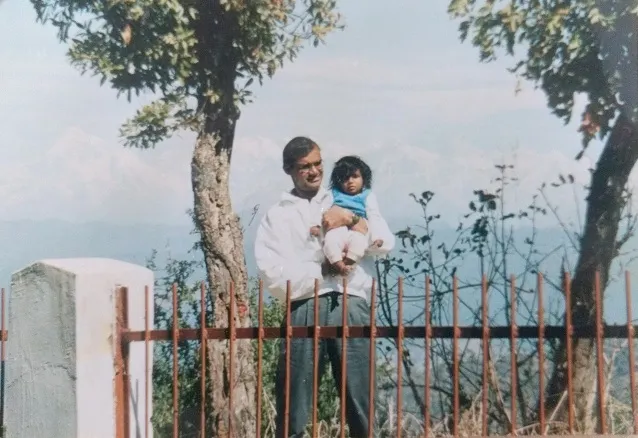
'I got found, and then I got fired'
When in Ranikhet, Krishnan was contacted by the founder of Xambala, a California and Chennai-based startup. They wanted to build a super fast switch, and asked if he was interested in joining them in Chennai. This was the first time Krishnan stepped out of Bangalore for work. In Chennai, he realised that his Tamil was stuck in the 1940s, since he learnt it from his father, who moved out of Tamil Nadu in 1948. The Madras Tamil had moved to the 1990s. He says,
The language and culture moves way faster than you imagine.
At Xambala, Krishnan couldn’t really specify his role. He says, “It was a typical startup, and you cannot tell in a startup what you did.” He worked in Perl, because it was good for text parsing, but since he didn't want to be limited to Perl, he found a tool called Swig, which allows a developer to wrap C/C++ functions for use with scripting languages. It supports Python, Perl, and Tcl.
After nine months, Krishnan was fired from the company. It was a one of a kind experience for him. He says, “I never gave an interview. I simply used to say I'm available and people used to get in touch. Even in Xambala, I got found, and then I got fired. They found a guy much cheaper than me who they thought would replace me. They weren't even sure.”
Learning from this experience, Krishnan made it a rule in his current company that they would never fire people.
Back to Bangalore
Krishnan came back to Bangalore and joined Mphasis, where he (and his team) built the first tracking system for a farm combine (complex farm machine that both cuts and threshes grain) and other planting and seeding equipments, for John Deere. Krishnan ported CAN Stack to Linux. CAN, or Controller Area Network, is a mechanism that defines how data moves in a vehicle. All the parts of a vehicle are connected to one system, and each part is programmed to say what it is doing.
By this time, Krishnan was planning to move back to the mountains, but Archana said that they would not go back unless there was a surety that they wouldn’t have to work, that they could still live comfortably after they turned 50 years old. Krishnan went to an investment company and got a number (target amount of money) based on his (and Archana’s) aspirations, inputs, and outputs. Over the next seven years, the couple made enough money to come closer to the target and move to the mountains.
Related read - How this architect-turned-farmer is helping Vadodara go organic with Upaj
Coding pause
Krishnan did the Transition to Project Management programme (how a techie should become a project manager) in HP. As a result, he was told that he could not be a manager. So, he decided to work on this weakness. He joined a company, Vault Systems, as a part of management.
He tried not to do programming at Vault Systems, and succeeded because he hired one of the best programmers he knew. Between the two of them, they could handle any program. Krishnan created a hiring company, where they recruited people and put them out for hiring. He was a sort of CEO for that software setup. Once the company reached Rs 10-15 crore in annual revenues, the owners wanted to sell the company. Even though Krishnan was against it, it was finally sold. He says, “I got an exit, not the kind you would imagine though.”
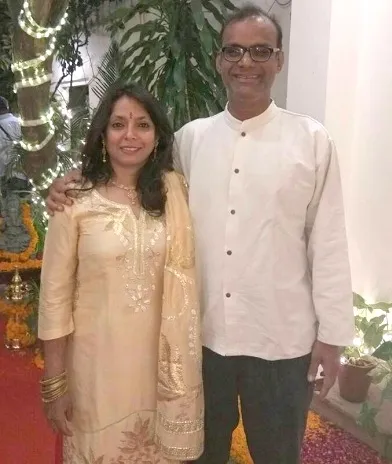
Archana's rule book
While at Vault Systems, Krishnan was also doing a recce of different locations to shift to, as Archana had said no to staying in Ranikhet for too long. Krishnan recollects,
“The other options we had at that time were Costa Rica and Trinity County in California (where my friend Lincoln was staying and offered to convert a bus to make two rooms for my family). We went there (Trinity) for a week, to explore.”
The couple had made a laundry list of things to finalise the place, and Krishnan traveled regularly to scope out different locations. Among the places he went to were Palampur, Kangra, and McLeodGanj. Archana was the thinker and Krishnan was the runner in the process. She helped Krishnan eliminate places that weren't a proper fit. After almost two years of exploring, when the couple came to Dharamsala in 2010, they decided to stay there. One of the rules was that once they shifted to a place, they would stay there for at least two years.
Mountains part - 2
Krishnan’s plan of action in Dharamsala was to create software engineers first, and then create a (software) company. He wanted to make open source technologies ubiquitous in the colleges of Dharamsala. He says, “I truly believe that if you install Linux in all the systems here (in colleges), you'll have great engineers. The key was to find a teacher in the college who would evangelise it (open source technologies).”
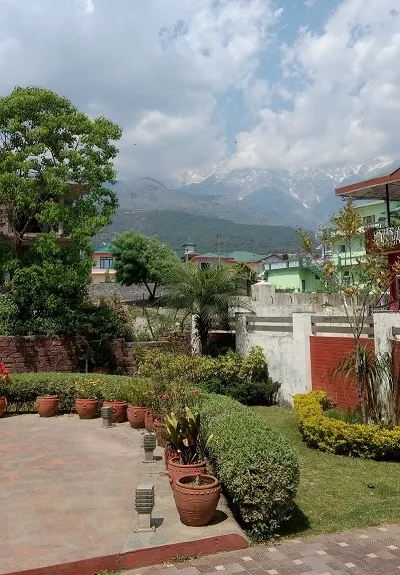
After eight months, Krishnan met Varun Ratan, who wanted to build an IT setup in Dharamsala. Krishnan agreed to help Varun, who then called up his friend Rahul from Srijan Technologies in Delhi. With one QA engineer, one customer experience executive, and two programmers, Krishnan, Varun and Rahul formed the company Srijan Dhauladhar Technologies LLP. It was a Drupal-based IT company. Looking back, Krishnan thinks that it was a great choice.
The recruitment strategy of Srijan Dhauladhar was to go to colleges, and talk about Drupal, about what the company does. The students were then invited to the office, and could work from there for a few days. The company has a dedicated room. Meanwhile, some of the junior team members will interact with these (students/graduates) and guide them. After almost three weeks, the HR steps in and asks if the people are still interested and want to be mentored. It requires two to three months of commitment (to learn/train), with no assurance of a job. Slowly, in a few years’ time, the recruitment became organic.
Meanwhile, Krishnan had a discussion with the owner of Vayudoot, the internet provider of the region. The company was dying, so he helped in terms of engineering, marketing, and sales. After some time, in 2013, he bought the company.
Also read - A mountain village inundated with tourism now gets a garden of electronics
Birth of Gai Technologies
It was difficult to build an IT setup in Dharamsala. Recruitment took a lot of time and patience. One couldn’t scale the company easily. Soon, Varun and Rahul decided to move on. Krishnan says,
It was fair, as the money was far away, and it looks really far away when you don't have the money.
It was a 30-member team then, and Krishnan was left with two options – shut down the company (which also would have been fine as the team members were very good with their skill set), or continue, working under a new umbrella. He knew that starting an IT company was an incredible idea, one that works. After some thinking, he decided to continue operations, and the company was renamed Gai Technologies Pvt. Ltd. When the split happened, shutting down Srijan Dhauladhar, Varun kept Vayudoot.
Krishnan told the team members to stay put for three months. After three months, if they were scared and wanted to move, they could go ahead. He told them,
We're going to survive. It's going to happen, because I've always done it and I'll do it again.
Some of the really important guys left in the process, and Krishnan had to almost start from scratch.

What’s in a name?
In 2001, when Krishnan went to register his company, he didn't want the company name to be serious, and suggested COW Technologies, with COW standing for ‘Copy On Write’ (an optimisation strategy used in computer programming) to the RoC. It was rejected, so he gave an alternative name – GAI Technologies, where GAI stood for ‘Get An Idea’. This was accepted. Fourteen years later, when Krishnan had to build his IT setup from scratch, he chose this company to be the parent company. Since Krishnan was impressed a lot by Japanese culture when he registered the company, he chose the logo of the company to be a Kanji symbol for cow, which means outdoors.
Today, the Gai Technologies team, which comprises of only local people from nearby areas, has contributed enough in Drupal open source to be among the top contributors in the world. The company is clocking over Rs 2 crore in revenues, and is looking to grow 100 percent in the coming year (2017-18).
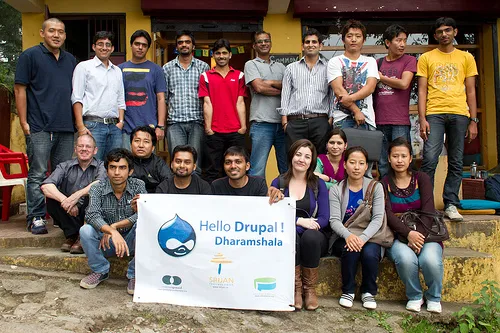
The Dharamsala model
To build and expand Gai Technologies, Krishnan is following a model that he calls ‘The Dharamsala Model’. According to this, one person from Gai Technologies in Dharamsala will create a team that will incubate somewhere close by (in Himachal Pradesh for now) and then organically grow around it. Electricity and internet (Vayudoot) are sorted in the region.
Krishnan believes that in 10 years, Gai Technologies will be present in over 20 locations in Himachal Pradesh, and that in the next one and a half decades, the region will be known for quality software.
Technology and the misunderstanding about programming
According to Krishnan, technology is meant to solve a set of problems really well. He also makes a point by saying, “Technology will never solve social or economic problems. Other than mathematics, no other body of knowledge is transferable. For example, economics will not solve a political problem.”
Krishnan speaks about a big misunderstanding about programming and software engineering. He says,
When people say I program in Python, it's as idiotic as saying I use a spanner. What you do with it is important. Programming languages are irrelevant. You see a problem, you look around and decide which tool (programming language) will help solve the problem well, and just use it.
He thinks that even a software engineer with 25 years of experience (such as himself) will not know his/her capabilities. He adds, “Nobody knows what the tolerance in software is, and zero bugs isn't an answer. Specifying it is hard, implementing it is impossible.”
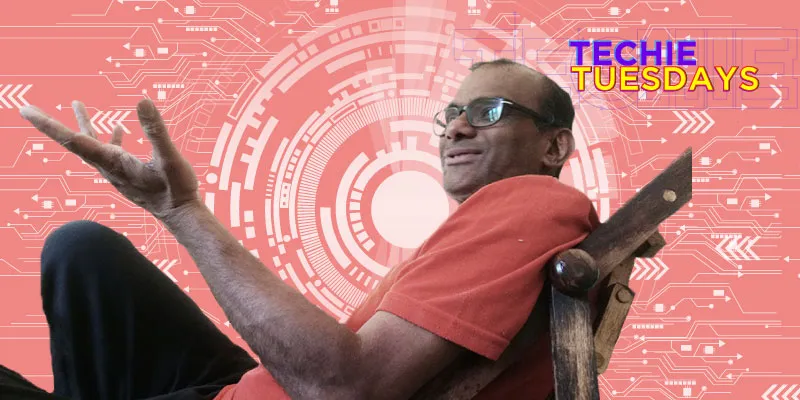
Digging deeper
Krishnan believes that it doesn't matter how good or bad you are; all that matters is if you're a part of the solution. He says, "As far as possible, be a part of the solution, and not the problem."
For Krishnan, fairness is the most important parameter to make decisions.
According to Archana, Krishnan has got ideologies, most of which are far from materialistic. If his passion conflicts with the larger good, it’s the latter that wins.
Krishnan says,
Basically, throughout my life, I climbed and I programmed. So, if I had any friends, they were either programmers or climbers. I am a software engineer, and will remain one.
He aligns his philosophies with the following lines by Robert Frost, from his poem ‘Two tramps in mud time’.
But yield who will to their separation,
My object in living is to unite
My avocation and my vocation
As my two eyes make one in sight.
Only where love and need are one,
And the work is play for mortal stakes,
Is the deed ever really done
For Heaven and the future's sakes.
And here's the bonus GIF of Krishnan juggling with 4 balls for our readers!



![[Techie Tuesdays] Meet Krishnan Narayanan, the techie who moved to mountains to code](https://images.yourstory.com/cs/wordpress/2017/04/Techie-Tuesday-Krishnan.jpg?mode=crop&crop=faces&ar=2%3A1&format=auto&w=1920&q=75)




